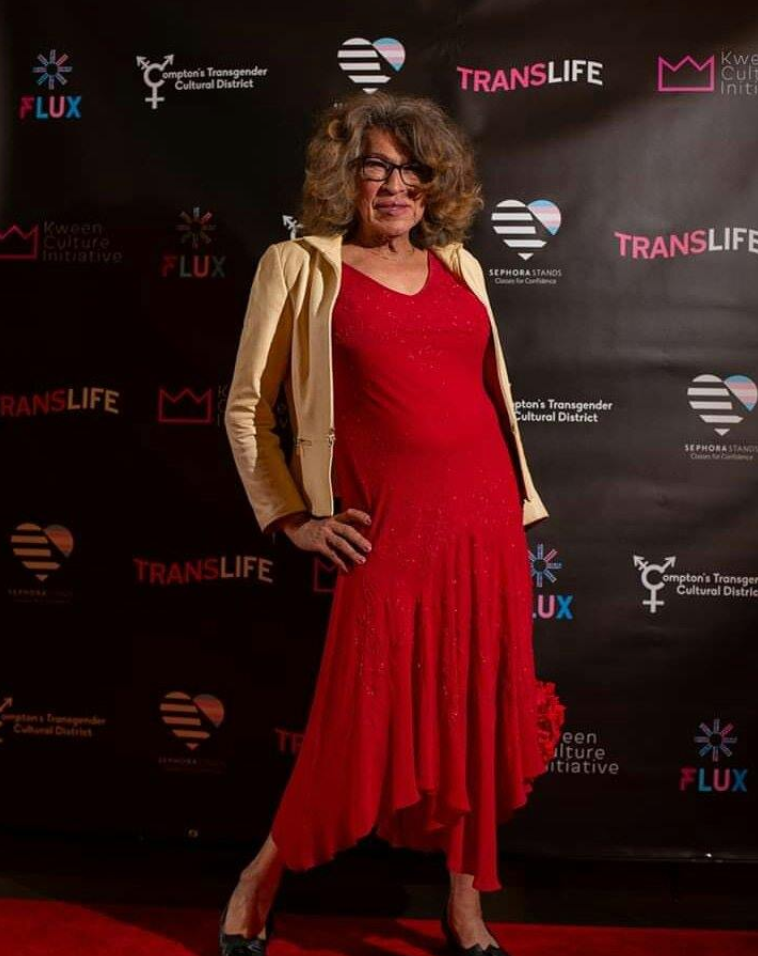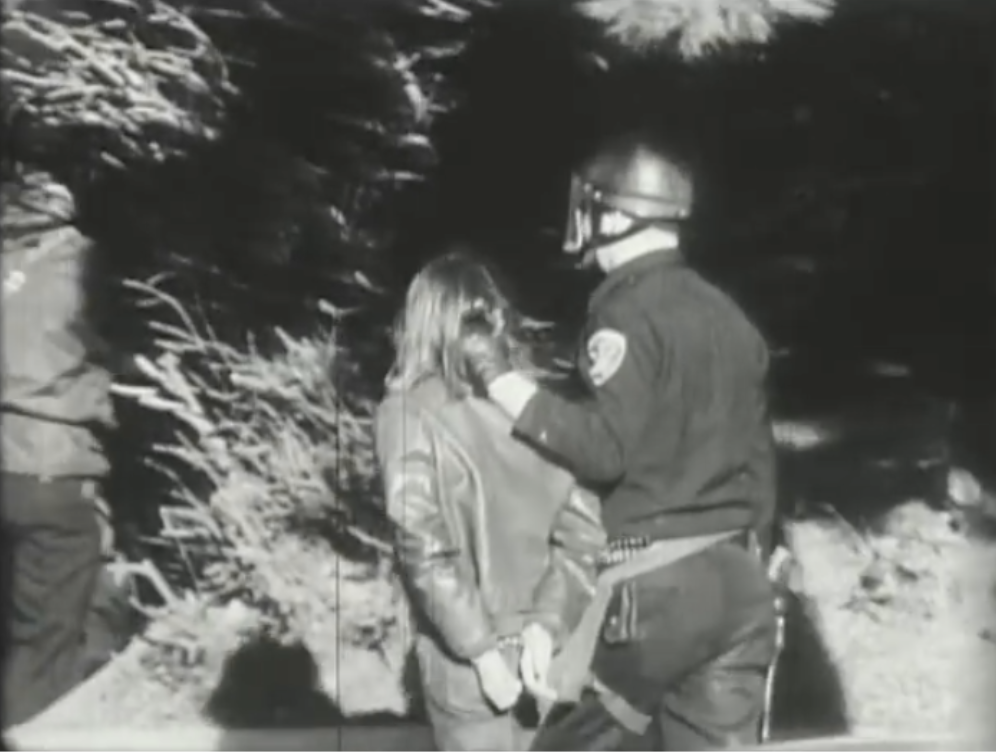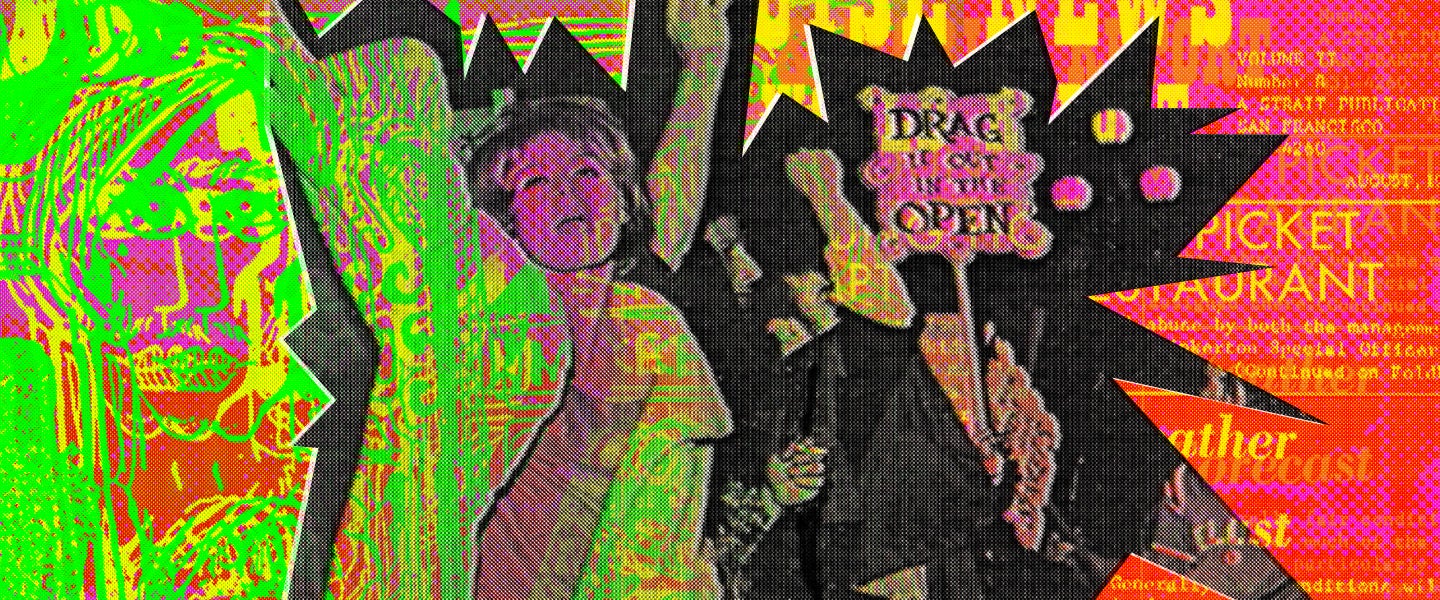Next week marks the 50th anniversary of the Stonewall Riots, remembered by many as a Rockettes-style kickline of drag queens facing down police in riot gear at a Greenwich Village gay bar in the early summer of 1969. As the story goes, the melee began when one such queen — perhaps Marsha P. Johnson or Sylvia Rivera — bereft by the death of Judy Garland, threw a brick at a police officer and a bevy of LGBTQ insurgents rose up in unison, chanting to the tune of the Howdy Doody theme song, “We are the Stonewall girls, we wear our hair in curls! We don’t wear underwear, to show our pubic hair!”
While the details are fiercely contested — was it a brick or a rock, was it festive or violent, were they actually grieving Judy Garland? — like most, I’ve always assumed Stonewall to be the birthplace of the gay rights movement. It turns out, though, that the first-known instance of militant street resistance to anti-transgender harassment from cops occurred three years earlier when, on a hot August night in 1966, dozens of drag queens and gay hustlers revolted at a restaurant called Gene Compton’s Cafeteria on the corner of Turk and Taylor Streets in the Tenderloin District of San Francisco.
Or as a trans woman named Sandy Green put it in a letter to the editor of the Gay Pride Quarterly in 1973, “Hell, honey, I can remember standing toe-to-toe and slugging it out with the cops back in ‘66 in front of Compton’s at Turk and Taylor. [If] those dizzy fags back in New York think that Christopher Street was something, honey, let me tell you now, they should’ve seen Turk Street in 1966.”
“It’s frustrating to me that everyone overlooks what happened at Compton’s,” laments Donna Personna, a 72-year-old trans woman who tells me she boarded a Greyhound bus to San Francisco at the age of 16 in order to pursue a life that aligned more closely with her true self. (While she identified as a gay teen boy at the time, in her “core” she knew she was a woman.) Personna was looking for other people like her and found them at Compton’s. At the time, homosexuality was believed to be a mental sickness and against the law, and so, Personna hadn’t dared speak of her true self with another person. At Compton’s, though, she discovered beautiful women, born biologically male, who were simply attempting to live on the outside the way they felt on the inside. “I didn’t yet have the courage to do that,” she says, “but I visited them, week after week, just to be a part of their lives.”

One of whom, she recalls, a 15-year-old black girl named Nicki, had run away from her home in the Southeast after having been molested by her church’s minister. Nicki’s family blamed the incident on Nicki, suggesting she leave since she wasn’t conforming to the role of a “good Christian boy.” Like many genderqueer outcasts in the U.S., Nicki found her way to the Bay Area because it was known to be welcoming of sexual minorities.
“San Francisco was a port city,” explains Victor Silverman, a cultural historian and history professor at Pomona College, when I ask how the Golden Gate became ground zero for LGBTQ Americans. As such, he adds, “It allowed for hidden pockets, removed from the fancy San Francisco elite, where queers, radicals, bohemians and artists could thrive.” Then, in the 1960s, an influx of young people arrived — some seeking survival, others an alternative vision for the U.S. that embraced counter-culture — all of whom were taken in and valued.
Compton’s, a small, modern, 24-hour restaurant chain brimming with formica and chrome, was an ideal place for the queens to gather because it was well lit and centralized. Next door was a bathhouse for gay men, on the corner was a bar serving affordable cocktails and nearby Woolworths provided refuge if they needed to re-up on eyelashes. “It was like their office,” Personna says. “Sex workers who walked the streets would come in after a shift and say things like, ‘Stay away from Ellis Street tonight because Margie got into a car, and we haven’t seen her in two days.’ It was both a union and a tight-knit family.”
More largely, the surrounding area (i.e., the Tenderloin) had become a beacon (if a largely ghettoized one) for trans people who were essentially prohibited elsewhere in the city. “They were presumed to be sex workers and confined to the red-light zone,” explains Susan Stryker, professor of gender and women’s Studies at the University of Arizona and director of Screaming Queens, a 2005 Emmy-winning documentary about the Compton’s Cafeteria riot. Most trans women in the Tenderloin yearned for a normal life, Stryker tells me, but it was nearly impossible for them to find jobs doing anything other than sex work since they didn’t have proper identification.
Moreover, trans sex workers were abused with impunity by the San Francisco police. Personna remembers sipping coffee at Compton’s when cops would walk in and tell them to get in the back of the police car, where they’d be forced to give blow jobs all night before being taken to jail and strip-searched in front of other prisoners. Worst of all, explains the late Amanda St. Jaymes in Screaming Queens, after sexually abusing them, the police would cut their long hair. “I’d refused, and they’d put me in the hole,” she says. “One girl was in there 60 days because she wouldn’t let them take her hair. That’s how important it was to us.”
“It was like being a prisoner of war,” Personna adds. “They break your spirit.”
St. Jaymes and the rest of the women at Compton’s would typically be arrested for “female impersonation,” explains Silverman, who co-directed Screaming Queens with Stryker. At the time, such “social purity” laws were on the books nationwide, along with laws against sodomy, contraception and abortion. Police enforced the female impersonation laws by counting the articles of male clothing they had on and checking to see whether the person was wearing boxers or panties.

The police attempted to organize vice in the city by confining it to designated neighborhoods, and the Tenderloin was where they “permitted” trans sex work (trans sex workers were immediately arrested if they strayed too far). “Turk Street was our street,” says St. Jaymes, citing the El Rosa Hotel at 166 Turk as the place where she and many other trans women called home. Everybody who lived in the Tenderloin ate at Compton’s, she adds. “It was like a fairy tale. You wouldn’t have believed the nightmare of the truth of it all.”
St. Jaymes and the rest of the queens did whatever they needed to do to survive. Some loaded their handbags with a pint of Southern Comfort to crack over a john’s head if he got out of line. Others used their high heels. “You had to be either able to kick or get your ass kicked,” St. Jaymes explains. “That’s just how it was in the Tenderloin.”
By the summer of 1966, the civil rights movement was fueling a newfound militancy in the Compton’s queens. GLIDE Memorial Methodist Church, a Tenderloin institution since 1930 that was two blocks from Compton’s, became a center of activism with the arrival of a charismatic young pastor named Cecil Williams, fresh from the front lines of racial struggle in the South. Williams reached out to a number of pioneering “homophile” groups like the Daughters of Bilitis, the Mattachine Society and a militant gay youth organization called Vanguard, formed in July of 1966 and comprised of young hustlers and drag queens drawn from the streets of the Tenderloin.
“When I learned that Vanguard met at Compton’s Cafeteria, I finally understood the dynamics of the conflict,” says Stryker. “The restaurant management didn’t like the new political attitude some of its customers were starting to express, and that friction lit the fuse that led directly to the riot.” Compton’s began prohibiting members of Vanguard and anyone who identified with the radical community. In response, Vanguard picketed to protest Compton’s discrimination on July 18th, the group’s first major political action. When it failed to resolve the conflict, the stage was set for a more dramatic confrontation.
Another minister, Adrien Ravarour, one of the founders of Vanguard, tells Stryker that he remembers the riot happening on the second Saturday night in August. Earlier that day at the Doggie Diner, a 24-hour restaurant similar to Compton’s at the cable car turnaround near Market Street, Dixie Russo, a trans woman who headed Vanguard’s street-queen coalition, was being harassed by a police officer. She resisted arrest, and there was a standoff. “Dixie was all hot and bothered and talking big at Compton’s about how she’d gotten the cops to back off at the Doggie Diner,” Stryker says.
So when the cops arrived at Compton’s later that night to make their regular sweep, many people were emboldened by Russo’s victorious Doggie Diner confrontation. In defiance, one of the queens sitting at the table by the front door threw her coffee in the cop’s face. And with that, all hell broke loose. Tables overturned, and omelettes went airborne. “Y’know, those heavy sugar shakers’ll just go right through a window,” St. Jaymes grins. “I think I put a sugar shaker through one of those windows.”
The gay hustlers kicked and punched the police, while the drag queens beat them with their heavy purses. The cops retreated outside to call for backup, but cafeteria customers, maybe 60 in all, poured into the street through the broken doors and windows and kept fighting as the paddy wagons pulled up.
When it was all over 30 minutes later, a police car was destroyed, the corner newsstand was set on fire and years of pent-up resentment had spilled out into the night. “There was a lot of joy after it happened,” says St. Jaymes. “A lot of us went to jail, but there was a lot of, ‘I really don’t give a damn. This is what needs to happen.’”
I was surprised, as a 40-year-old gay man, that I’d never heard anything about the Compton’s Cafeteria riot. Stryker says that’s because years of police records were destroyed. While researching Screaming Queens, she went to the city archives to find police arrest records from August 1966. The archivist sighed and explained the records had “disappeared.” The police had been entrenched in a culture war with the hippies, she explained, noting that when progressive forces took over city politics in the early 1970s, “There were lots of documents that the police didn’t want people to have access to.”
As for Compton’s, it started closing at midnight, and the business never really recovered (it went under in 1972, a porn shop taking its place).
The trans community moved on in many ways, too. The circumstance of their lives had been forever changed by what happened that night. In the immediate aftermath of the riot, the city became more aware of the needs of its trans citizens, leading to the formation of a unit of the Public Health Department called “The Center for Special Problems,” which began offering group counseling sessions and hormone-treatment services. And in 1968, Stanford University Medical Center opened a new clinic for surgical sex reassignment, the first in the Bay Area.
But progress is a bumpy road, Silverman notes. “The gay movement was able to take over and claim its issues and move forward, but trans people were marginalized again in the 1970s and that didn’t shift again until the 1990s.” Indeed, Screaming Queens ends with a reminder: “San Francisco didn’t pass a transgender anti-discrimination ordinance until 1995.”
He still believes, though, that the Compton’s Cafeteria riot marks the beginning of the gay liberation movement in San Francisco — and in the U.S. writ large: “It was a militant assertion of the rights of people to love who they want, to present their gender in the ways that they want and became a turning point in how people were treated, at least briefly.”
For her part, Stryker says she’s proud of the work she did as a historian to recover more knowledge about the riot and help to change the narrative that all LGBTQ resistance began at Stonewall. “In fact, there was a good decade of militant resistance beforehand, and Compton’s fits into that broader pattern,” she explains, suggesting we think of Stonewall more as a crest of a wave than anything else.
“The big takeaway for both Compton’s and Stonewall is that resistance matters and leads to social change,” she continues. “We’ve recently seen a pretty significant rollback to changes that were inspired by events in the 1960s like Compton’s and Stonewall. So this is a great time to remember that we need to not just be waving our rainbow flags these days, but preparing to fight, too.”

